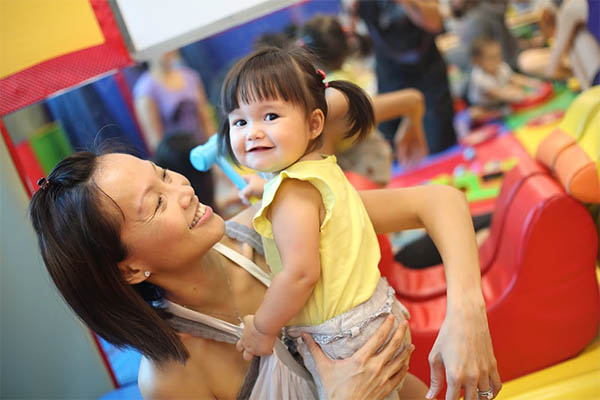 Sometimes in our anxiety to help our children develop good communication skills we put them under extra pressure and talking becomes a ‘chore’ rather than an enjoyable, useful experience. When we are trying to help our children, we teach them as though they are giving a presentation. Consider our own communication, express our best selves, and remember it takes two to talk.
Sometimes in our anxiety to help our children develop good communication skills we put them under extra pressure and talking becomes a ‘chore’ rather than an enjoyable, useful experience. When we are trying to help our children, we teach them as though they are giving a presentation. Consider our own communication, express our best selves, and remember it takes two to talk.
Every day, every one of us is involved in one of the most complicated human activities communication.
Just think about all the things we talk about daily: Saying “hello” or “goodbye” to friends and family, asking for something in a restaurant, complaining about faulty goods in a shop, asking directions, telling your children to “hurry up” for school, gossiping with friends. The reasons to talk are endless!
Adults draw on a vocabulary of around 50,000 words and understand over 100,000. We also know over 1000 rules of grammar which helps us put words into sentences. Amazingly we learn most of this before we are 7 years old.
Sometimes in our anxiety to help our children develop good communication skills we put them under extra pressure and talking becomes a ‘chore’ rather than an enjoyable, useful experience. Stop and think for a moment – would you rather spend an hour chatting with friends or giving a lecture to 50 people?
Yet, sometimes when we are trying to help our children we teach them as though they are giving a presentation. How often do you find yourself asking your child to “say it properly” or “tell Auntie where you went last weekend”? In this way we are not engaging our children in conversation but rather asking them to demonstrate what they can say in an unnatural context. It’s rather like being up there on a stage giving a lecture.
Talking really does involve at least two people. We can consider our own communication styles to see how we might bring out the best in our children, empowering them with the right to speak. After all, to become successful, happy, productive self-leaders, actively engaged in life, they will need to feel accepted and comfortable expressing opinions. To develop these qualities in others, we must express and experience them ourselves, because children absorb what’s around them. Adults are the models, the living examples, children learn from. The more playful, creative, aware and sensitive these adults are, the richer the experience for the children they influence.
So let’s consider our own communication, express our best selves, and remember it takes two to talk.
What kind of Communicator are you?
Hanen has identified four main adult:child communication styles. Which one fits you?
- “Don’t Trouble Dear – I’ll Do It For You” – Tends to do everything for the child, not allowing him/her to find out things for himself. This child may not get to EXPERIENCE things that lead to language.
- “Too Scheduled” – Tends to have decided what games to play and what words to teach rather than allowing the child any choice. This child may not be MOTIVATED by what the parent has decided is the talking topic.
- “Teacher” – We all want to teach our children but sometimes we do so much of it that we forget that a child learns best through doing rather than watching or listening. This child has little OPPORTUNITY to get involved in his own language learning.
- “Responsive” – Follows the child’s lead and adapts any situation to make the most of it and turn it into a learning experience. This parent will focus on the purpose of conversation rather than the individual words or grammar being learned.
Realistically none of us can be “Super-Mum” or “Super-Dad” all the time. We swap about between all these styles. Yet, these models show us that sensitive, responsive adults empower children by providing opportunities for positive language experience.
The more we engage our children in meaningful conversations and encourage them to chat, the more they will develop their self-esteem and right to voice thoughts and feelings.
Talking needs to be FUN… both for us and for our children.
Remember that the first step in helping your child learn is to become aware of how you relate to talk to your child.
How do you respond? What kind of partner are you?
- The “DON’T TROUBLE DEAR – I’LL DO IT FOR YOU” partner – who indulges in natural loving sabotage, instead of giving the child a chance to
- The “TOO SCHEDULED” partner – who misses opportunities to communicate with her child by insisting on her own agenda instead of following the child’s lead.
- The TEACHER partner – who does most of the talking and forgets that children learn best by doing rather than by watching or following directions.
- The RESPONSIVE partner – who encourages communication by following the child’s initiations with sensitive, appropriate responses.
You must reach your child so that you can teach him.
At Julia Gabriel, we empower students to communicate confidently through EduDrama®, a unique learning philosophy inspired by educators passionate about children, language & the arts. For more information about our programmes, workshops and seminars, contact us here.

